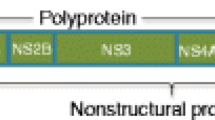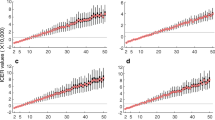Abstract
Zika virus (ZIKV) is a vector-borne disease that has rapidly spread during the year 2016 in more than 50 countries around the world. If a woman is infected during pregnancy, the virus can cause severe birth defects and brain damage in their babies. The virus can be transmitted through the bites of infected mosquitoes as well as through direct contact from human to human (e.g., sexual contact and blood transfusions). As an intervention for controlling the spread of the disease, we study a vaccination model for preventing Zika infections. Although there is no formal vaccine for ZIKV, The National Institute of Allergy and Infectious Diseases (part of the National Institutes of Health) has launched a vaccine trial at the beginning of August 2016 to control ZIKV transmission, patients who received the vaccine are expected to return within 44 weeks to determine if the vaccine is safe. Since it is important to understand ZIKV dynamics under vaccination, we formulate a vaccination model for ZIKV spread that includes mosquito as well as sexual transmission. We calculate the basic reproduction number of the model to analyze the impact of relatively, perfect and imperfect vaccination rates. We illustrate several numerical examples of the vaccination model proposed as well as the impact of the basic reproduction numbers of vector and sexual transmission and the effect of vaccination effort on ZIKV spread. Results show that high levels of sexual transmission create larger cases of infection associated with the peak of infected humans arising in a shorter period of time, even when a vaccine is available in the population. However, a high level of transmission of Zika from vectors to humans compared with sexual transmission represents that ZIKV will take longer to invade the population providing a window of opportunities to control its spread, for instance, through vaccination.









Similar content being viewed by others
References
Agusto F, Bewick S, Fagan W (2017) Mathematical model for zika virus dynamics with sexual transmission route. Ecol Complex 29:61–81
Andraud M, Hens N, Beutels P (2013) A simple periodic-forced model for dengue fitted to incidence data in singapore. Math Biosci 244(1):22–28
Baca-Carrasco D, Velasco-Hernández JX (2016) Sex, mosquitoes and epidemics: an evaluation of zika disease dynamics. Bull Math Biol 78(11):2228–2242
Barouch DH, Thomas SJ, Michael NL (2017) Prospects for a zika virus vaccine. Immunity 46(2):176–182
Bonyah E, Okosun KO (2016) Mathematical modeling of zika virus. Asian Pac J Trop Dis 6(9):673–679
Brauer F, Castillo-Chavez C, Castillo-Chavez C (2001) Mathematical models in population biology and epidemiology, vol 40. Springer, Berlin
Brauer F, Castillo-Chavez C, Mubayi A, Towers S (2016) Some models for epidemics of vector-transmitted diseases. Infect Dis Model 1(1):79–87
Calvet GA, Filippis AMB, Mendonça MCL, Sequeira PC, Siqueira AM, Veloso VG, Nogueira RM, Brasil P (2016) First detection of autochthonous zika virus transmission in a hiv-infected patient in rio de janeiro, brazil. J Clin Virol 74:1–3
Castillo-Chavez C, Feng Z, Huang W (2002) On the computation of ro and its role on. Mathematical approaches for emerging and reemerging infectious diseases: an introduction, vol 1, pp 229. Springer Science & Business Media
CDC Z-P-R (2017a). https://www.cdc.gov/zika/pdfs/zika-puerto-rico-handouts.pdf. Accessed 4/3/2017
CDC Z-U (2017b). http://www.cdc.gov/zika/geo/united-states.html. Accessed 4/3/2017
CIA (2017). https://www.cia.gov/library/publications/the-world-factbook/geos/rq.html. Accessed 4/3/2017
Coutinhoa FA, Burattinia M, Lopeza L, Massada E (2006) Threshold conditions for a non-autonomous epidemic system describing the population dynamics of dengue. Bull Math Biol 68(8):2263–2282
Cushing J, Diekmann O (2016) The many guises of r 0 (a didactic note). J Theor Biol 404:295–302
Dick G, Kitchen S, Haddow A (1952) Zika virus (i). Isolations and serological specificity. Trans R Soc Trop Med Hyg 46(5):509–520
Duffy MR, Chen T-H, Hancock WT, Powers AM, Kool JL, Lanciotti RS, Pretrick M, Marfel M, Holzbauer S, Dubray C et al (2009) Zika virus outbreak on yap island, federated states of micronesia. N Engl J Med 2009(360):2536–2543
Gao D, Lou Y, He D, Porco TC, Kuang Y, Chowell G, Ruan S (2016) Prevention and control of zika as a mosquito-borne and sexually transmitted disease: a mathematical modeling analysis. Sci Rep 6:1–10
Hennessey M, Fischer M, Staples JE (2016) Zika virus spreads to new areas—region of the Americas, May 2015–January 2016. Am J Transpl 16(3):1031–1034
Kucharski AJ, Funk S, Eggo RM, Mallet H-P, Edmunds WJ, Nilles EJ (2016) Transmission dynamics of zika virus in island populations: a modelling analysis of the 2013–14 french polynesia outbreak. PLoS Negl Trop Dis 10(5):e0004726
Lee S, Chowell G, Castillo-Chávez C (2010) Optimal control for pandemic influenza: the role of limited antiviral treatment and isolation. J Theor Biol 265(2):136–150
Martorano Raimundo S, Amaku M, Massad E (2015) Equilibrium analysis of a yellow fever dynamical model with vaccination. Comput Math Methods Med 2015:482091. https://doi.org/10.1155/2015/482091
medpagetoday (2017) http://www.medpagetoday.com/infectiousdisease/zikavirus/63416. Accessed 4/3/2017
Musso D, Nhan T, Robin E, Roche C, Bierlaire D, Zisou K, Shan Yan A, Cao-Lormeau V, Broult J (2014) Potential for zika virus transmission through blood transfusion demonstrated during an outbreak in french polynesia, november 2013 to february 2014. Euro Surveill 19(14):20761
Musso D, Roche C, Robin E, Nhan T, Teissier A, Cao-Lormeau V-M et al (2015) Potential sexual transmission of zika virus. Emerg Infect Dis 21(2):359–61
NIAID N-I-o-A-a-I-D (2016) https://www.niaid.nih.gov/diseases-conditions/zika-vaccines. Accessed 4/3/2017
NIH N-I-o-H (2016) https://www.nih.gov/news-events/news-releases/nih-begins-testing-investigational-zika-vaccine-humans. Accessed 4/3/2017
Nuevo-día (2016) http://www.elnuevodia.com/english/english/nota/zikavaccinearrivesinpuertorico-2237961/. Accessed 4/3/2017
Organization WH et al (2016a) Fourth meeting of the emergency committee under the international health regulations (2005) regarding microcephaly, other neurological disorders and zika virus. Saudi Med J 37(10):1166–1167
Organization WH et al (2016b) Who director-general summarizes the outcome of the emergency committee regarding clusters of microcephaly and guillain-barré syndrome. Saudi Med J 37(3):334
Pandey A, Mubayi A, Medlock J (2013) Comparing vector-host and sir models for dengue transmission. Math Biosci 246(2):252–259
Pereira RC, Silva AN, Souza MCO, Silva MV, Neves PP, Silva AA, Matos DD, Herrera MA, Yamamura AM, Freire MS et al (2015) An inactivated yellow fever 17dd vaccine cultivated in vero cell cultures. Vaccine 33(35):4261–4268
Saad-Roy C, van den Driessche P, Ma J (2016) Estimation of zika virus prevalence by appearance of microcephaly. BMC Infect Dis 16(1):754
Shan C, Muruato AE, Nunes BT, Luo H, Xie X, Medeiros DB, Wakamiya M, Tesh RB, Barrett AD, Wang T et al (2017) A live-attenuated zika virus vaccine candidate induces sterilizing immunity in mouse models. Nat Med 23(6):763–767
ST-Louis P-d (2016) http://www.stltoday.com/lifestyles/health-med-fit/health/slu-to-test-zika-vaccine-on-volunteers/article_59ac6393-3fd2-5553-894c-a2a6c4f0fba1.html. Accessed 4/3/2017
Towers S, Brauer F, Castillo-Chavez C, Falconar AK, Mubayi A, Romero-Vivas CM (2016) Estimate of the reproduction number of the 2015 zika virus outbreak in barranquilla, colombia, and estimation of the relative role of sexual transmission. Epidemics 17:50–55
Van den Driessche P, Watmough J (2002) Reproduction numbers and sub-threshold endemic equilibria for compartmental models of disease transmission. Math Biosci 180(1):29–48
Yakob L, Clements AC (2013) A mathematical model of chikungunya dynamics and control: the major epidemic on réunion island. PloS ONE 8(3):e57448
Acknowledgements
The authors are thankful to Suzanne Lenhart from the University of Tennessee for her helpful comments on the organization of the article before submission. The authors are also grateful to the anonymous reviewers for their helpful comments and suggestions throughout the manuscript.
Author information
Authors and Affiliations
Corresponding author
Appendices
Appendix A \(\mathcal {R}_0\) Calculations
In this appendix, we calculate the basic reproduction of the ZIKV model using the Next Generation Operator (Van den Driessche and Watmough 2002); in our case, the population is divided into \(n=5\) compartments, the infected compartments are i, \(e_v\) and \(i_v\) giving \(m=3\). The ZFE is given by \(\mathbf {x}_{0}=(0,0,0,\frac{ (\mu +\omega )}{\mu +\phi +\omega },\frac{\phi }{\mu +\phi +\omega })^t\) where \(\mathbf {x}=(i,e_v,i_v,s,v)^t\). The progression of an infected individual through various compartments is given by:
To calculate \(\mathcal {R}_{0}\), we determine matrices F and V, given by
Using simple algebra to calculate \(V^{-1}\), we obtain
and the next generation matrix of the model with vaccination is given by
where \(\mathcal {R}_{0}=\rho (FV^{-1})\) and thus
That is,
Appendix B Proof of Theorem 1
In this appendix, we provide a proof of Theorem 1. In our case, we have that \(\mathbf X =(s,v,r,s_v)^t\), \(\mathbf Z =(i,e_v,i_v)^t\) thus: \(\mathbf U _0(\mathbf X ^*,0)=(1-\rho ,\rho ,0,1,0,0,0)^t\),
To show (H1), we calculate
and then the Jacobian matrix of H at \(\mathbf X ^*\) to study if its eigenvalues have negative real part
Therefore, it can be easily checked that all the eigenvalues of the matrix above have negative real part and then \(\mathbf X ^*\) is l.a.s of the system \(\frac{d\mathbf X }{dt} =H(\mathbf X ,0)\).
To show (H2), first we calculate the matrix A
where \(\rho =\frac{\phi f}{\mu +\omega +\phi f}\). Since \(\mathcal {R}_0<1\), it follows that \((1-\rho )R_d<1\) as well and thus, the off elements of the diagonal of the matrix A have negative sign which means that A is an M-matrix. Second, the vector \(\hat{G}\) can be expressed as \(\hat{G}(\mathbf X,Z )=G(\mathbf X,Z )-A\mathbf Z \) and after some simple manipulations
Since \(0<s<1-\rho \), then the last condition holds with \(\hat{G}(\mathbf X,Z )\ge 0\) and therefore \(\mathbf U _0\) is g.a.s.
Rights and permissions
About this article
Cite this article
Valega-Mackenzie, W., Ríos-Soto, K.R. Can Vaccination Save a Zika Virus Epidemic?. Bull Math Biol 80, 598–625 (2018). https://doi.org/10.1007/s11538-018-0393-7
Received:
Accepted:
Published:
Issue Date:
DOI: https://doi.org/10.1007/s11538-018-0393-7




